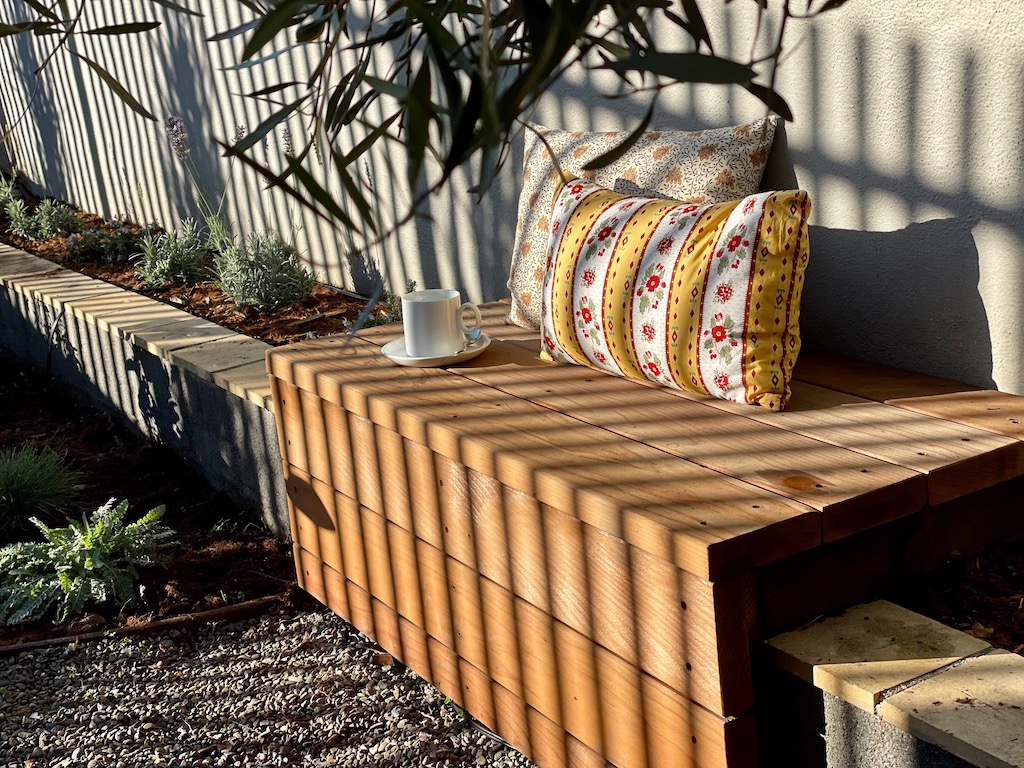How to Start Great Gardening Projects for Kids Now
Jen Strobel knows a thing or two about the best gardening projects for kids. As the design department manager and events coordinator at Sloat Garden Center in the San Francisco Bay Area, she works closely with kid gardeners, developing classes, in-store activities, birthday parties, and school field trips.
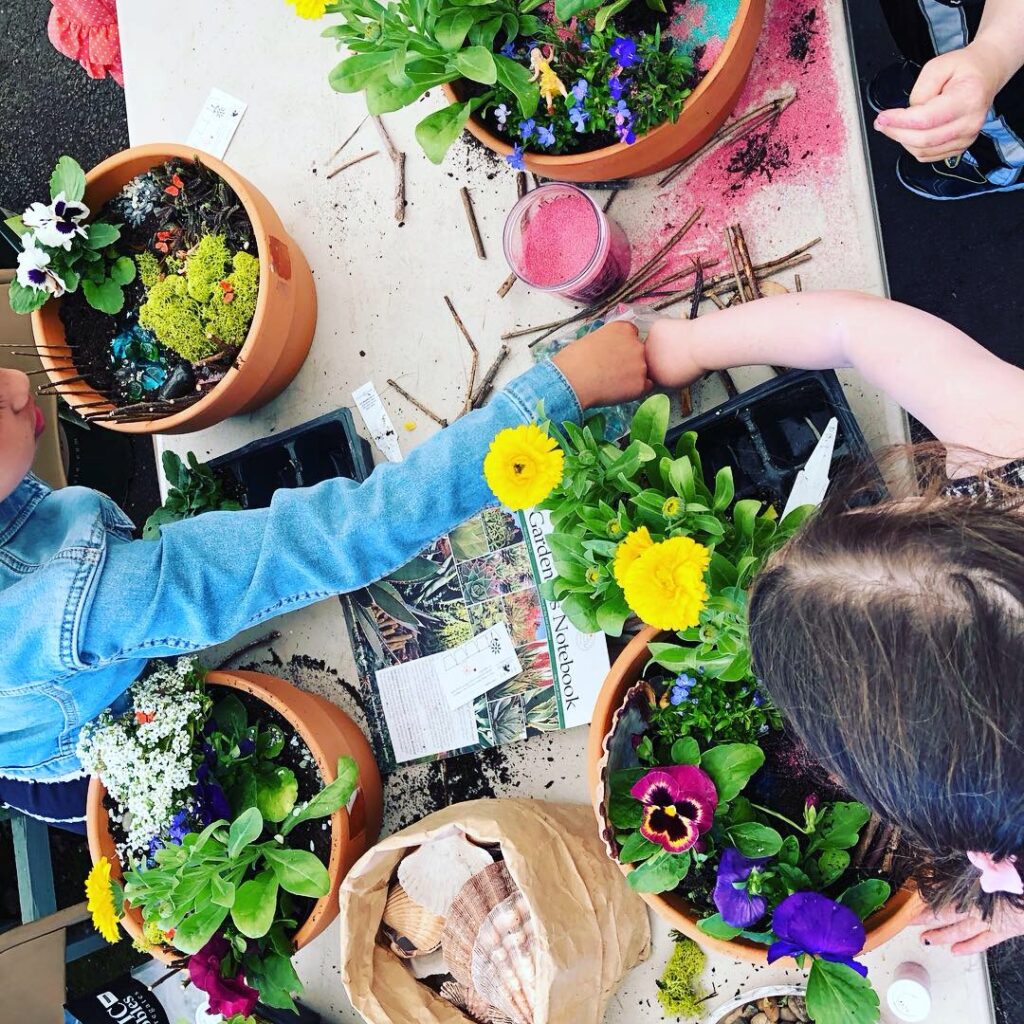
“Kids have a closer connection to nature than we credit them for,” Jen says. “I find that really encouraging and inspiring. We lose that relationship with nature as we get older.
“Harnessing this energy when kids are young is critical. We are literally planting seeds for their continued interest in nature and the environment, going forward.”
Jen herself has had a passion for plants and gardening since she was little. “I love flowers,” she says.
She began working at Sloat 28 years ago, with a break in between to raise her son. For her gardening inspiration, Jen draws on her artistic talents as a creator of mixed media collages, horticulture knowledge gained through years of hands-on experience, and a respect for the Bay Area’s many microclimates.
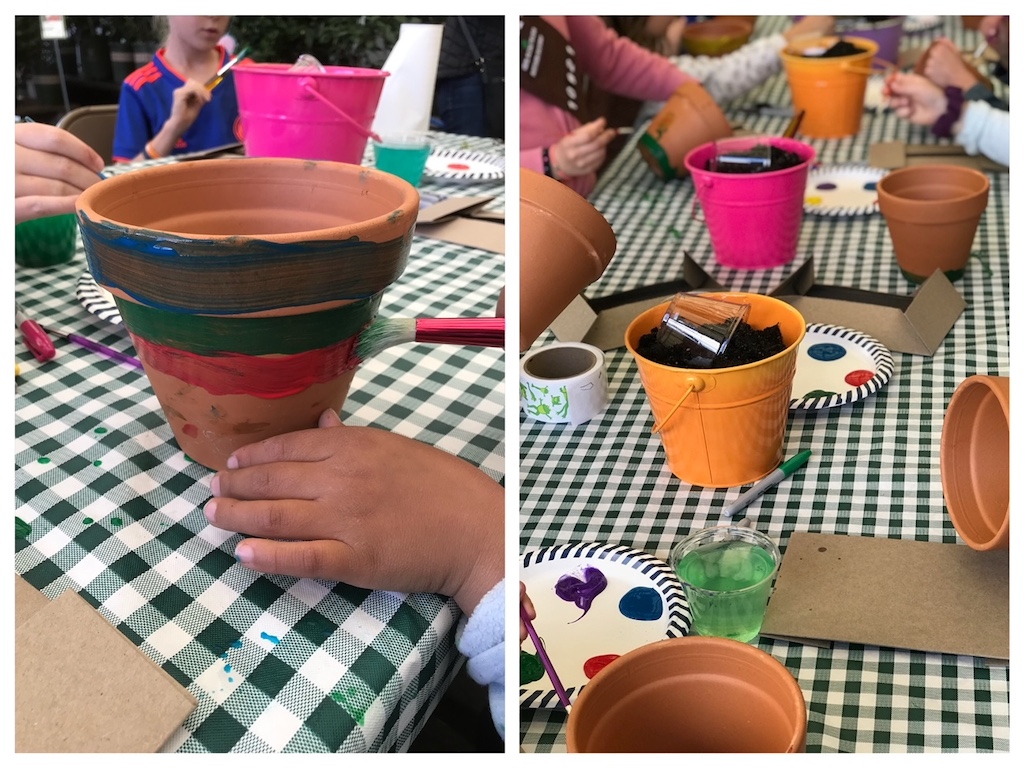
“Turn off the TV and the phone, take kids outside to walk around, and really look at things,” Jen urges. “You might hold a scavenger hunt as a way to engage kids. Search for a butterfly or a ladybug. You’ll find kids will connect with this kind of activity–it’s so much more natural to be outside than indoors, behind an iPad.”
A Planting Birthday Party
Planting parties are a huge hit with kids, Jen says. Like a pottery-making party or a painting party, parents book their reservation at a Sloat Center and select a planting activity.
On party day, the store provides the materials for the project, sets up the worktables, and staffs the party with a facilitator. The parents decorate the space and bring the refreshments.
Make a Fairy Garden
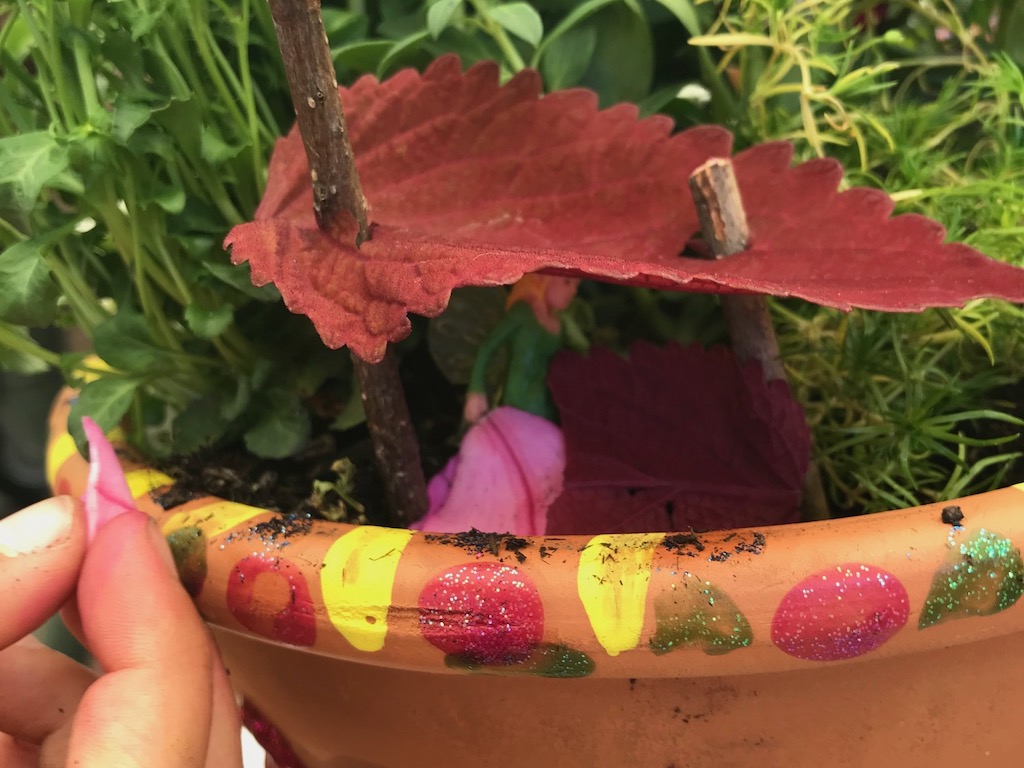
Making a fairy garden is a popular gardening project for a planting party. Kids are challenged to use their imagination and draw upon their problem-solving skills, Jen observes. Plus, it’s magical!
Start by having kids paint and decorate terracotta pots. Then describe to them what fairies will need. A place to hide…a spot for water…a path to travel…big leaves to hide under…a place to sun themselves…. You’ll find a charming set of criteria here.
Kids will devise remarkably creative solutions, Jen says. One might use pebbles as stepping stones. Another might turn sticks into a fence. A big leaf might transform into a fairy house when suspended with twigs.
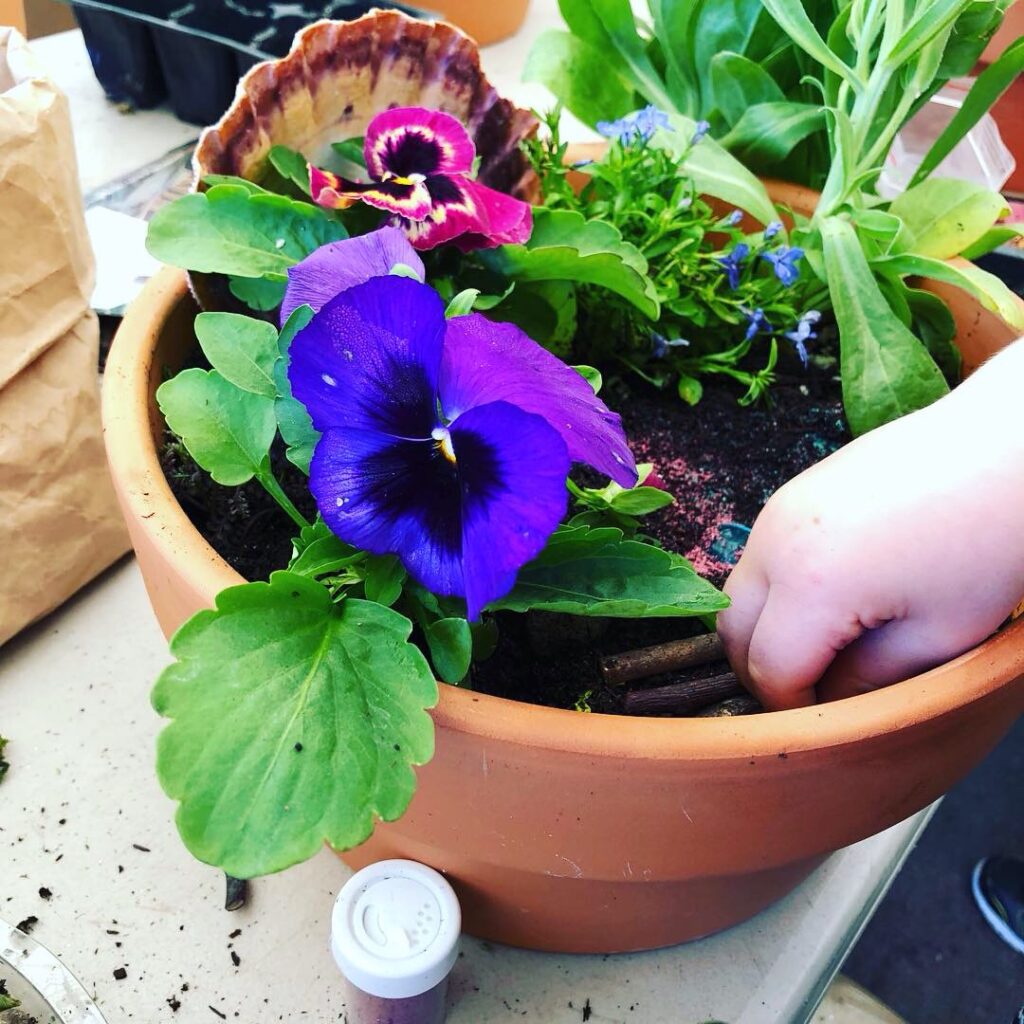
More Gardening Projects for Kids
The Sloat website has many creative garden projects for kids. Here are some ideas as described by Jen:
Bird Feeder:
Paint a toilet paper roll, roll it in peanut butter or almond butter, and then into birdseed. Thread string through the roll and hang your bird feeder outside a window. Watch birds come to feed.
Make Something Grow:
Radishes are quick to sprout. This is a good project to start from seed, since you’ll see results within a week. Leafy greens such as lettuce, arugula, spinach and chard are other good choices. Buy the starts (baby plants) or buy the seeds.
Sunflowers are aesthetically satisfying to grow. Kids can measure the growth of the plant every week to practice math skills.
Tips for a garden renovation.
Terrariums
Terrariums are super fun for kids. This is an especially good project for kids who live in apartments. Introduce fairy garden principles to create a mini landscape.
Closed-top terrariums create a whole ecosystem, Jen explains. “There is evaporation, then condensation—it’s how we get rain. Only, this happens in jar, making the terrarium self-sustaining.”
Here are the specific instructions from the Sloat website. And here’s my unscientific version.
How to Make a Bug Hotel
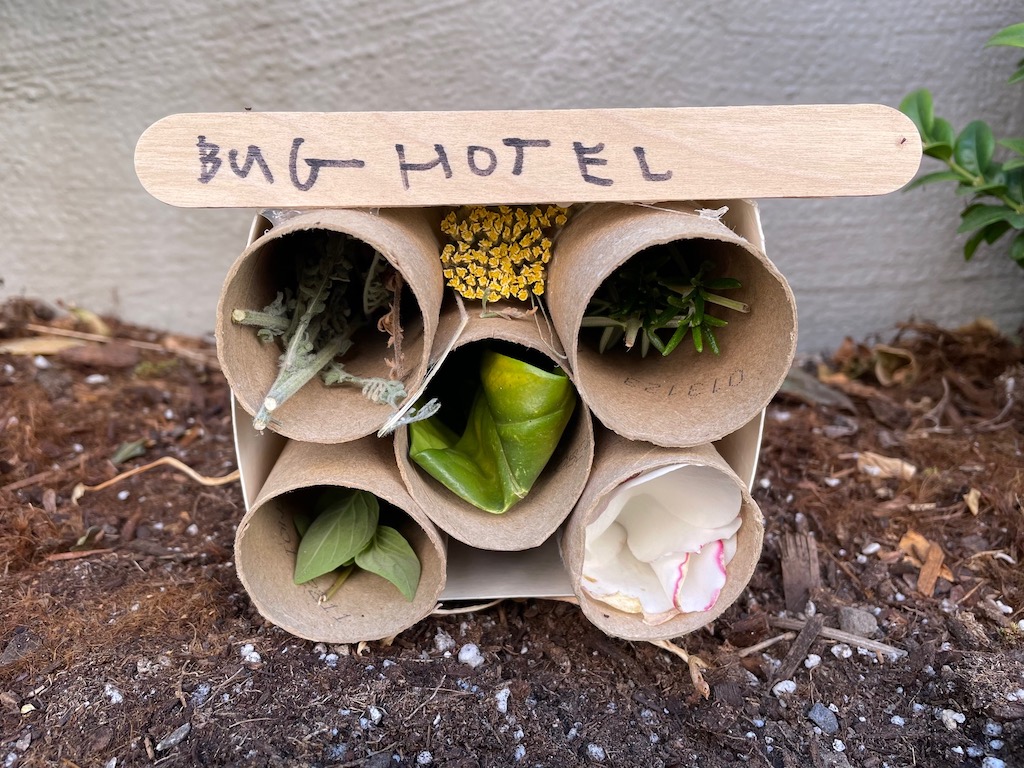
This gardening project, found on the Sloat website, seemed perfect for seven-year-old N. The instructions below are adapted from the website.
Materials Needed
- A cardboard box or milk carton
- Wooden tongue depressor stick
- Waterproof Sharpie or other indelible pen
- Toilet paper rolls
- Various materials ranging from pinecones, stones, moss, sticks, shells, leaves (these will be the beds for your bugs)
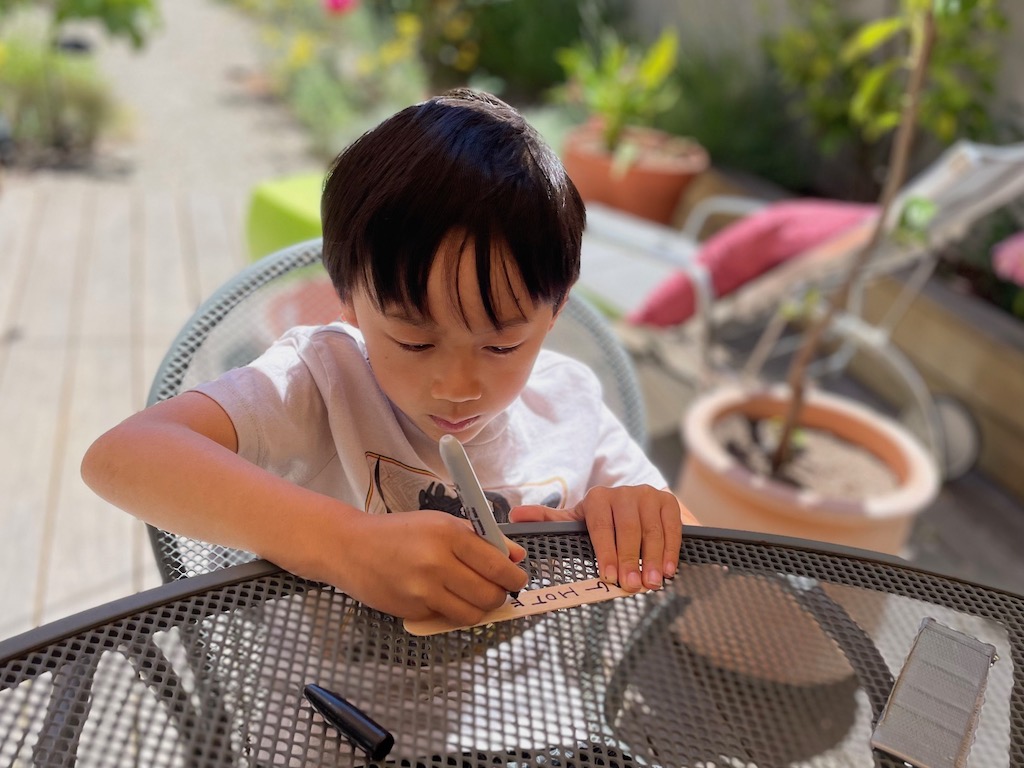
Tools Needed
- Sharp scissors
- Hot glue gun
Have a grownup help you cut a cardboard box or milk carton to use for your project. (We used a quart-size milk carton cut down to 4 inches high.)
Put the toilet paper rolls in your box or milk carton to form a grid of ‘rooms’ in your hotel. In each room, put a different material (leaves, moss, sticks, etc.).
Be sure to make a sign with your hotel name, so the bugs know where to go. (We used a wooden tongue depressor, which should withstand inclement weather, wrote the hotel name with an indelible Sharpie, and glued the sign to the milk carton with a hot glue gun.)
Set your hotel in a warm and protected space that you can view easily. Watch as your hotel starts to fill up with visitors. Observe which bugs prefer which ‘beds’.
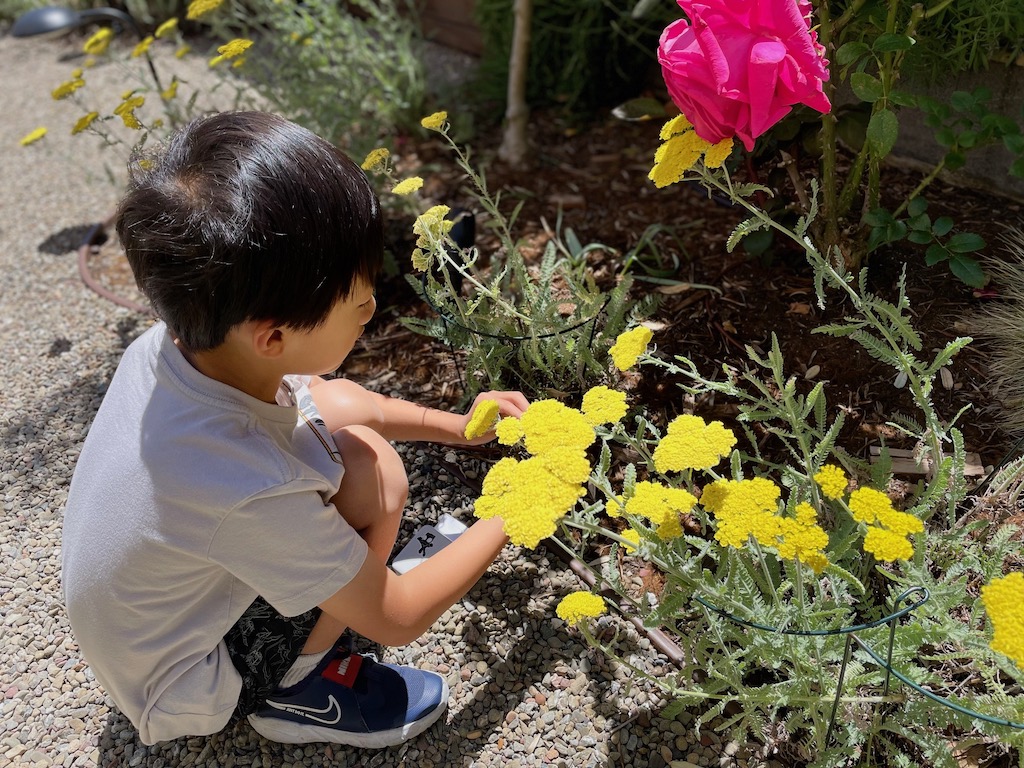
Why Kids Should Garden
Gardening affects a child’s brain, body, and soul, according to PBS Kids.
And for more benefits, “The garden offers hands-on exploration of so many subjects, including science, math, art, literature, and history.
“Gardening allows kids to learn through experience, fostering a growth mindset through trial and error. A garden is a laboratory. It is a safe, fun place to try new things, make ‘mistakes,’ and learn from them,” according to the website, KidsGardening.
And finally, “When kids garden, they make a connection to plants and food,” Jen adds. “Nothing is quite as important as that.”
Kids Week, July 8 through 12
If you live in the San Francisco Bay Area, mark your calendar for Kids’ Week, a full week of kid-friendly activities at Sloat stores. “There will be stations set up for birds, bugs, flowers, edible plants, and more. Each store will be a little bit different,” Jen says.
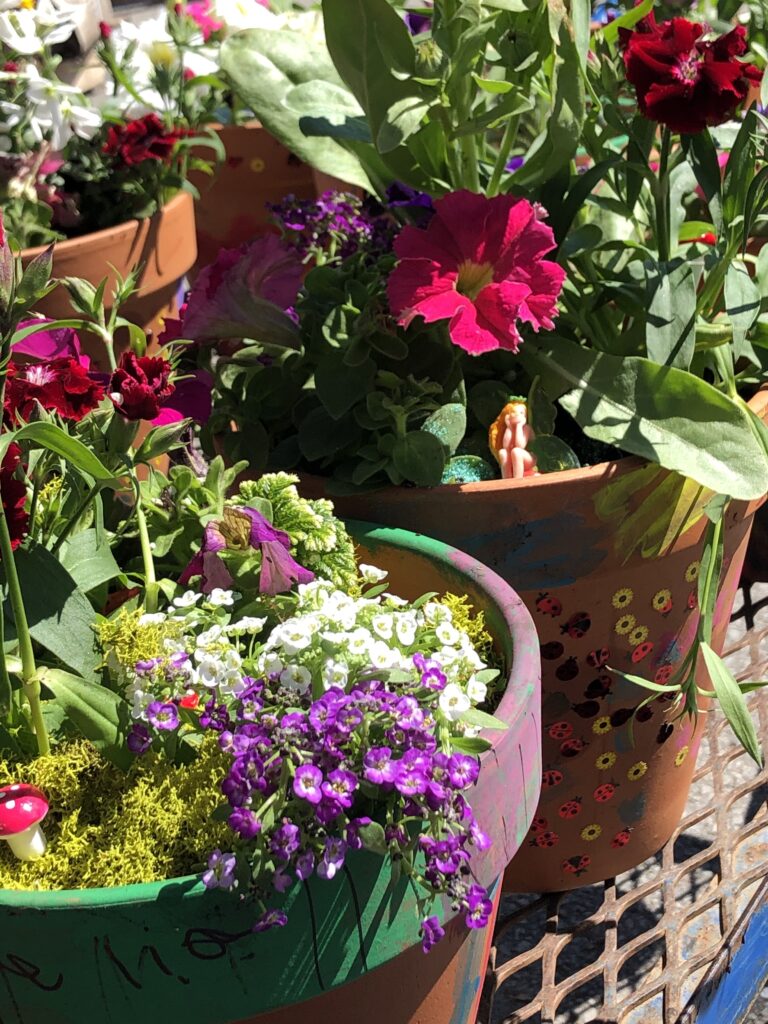
Sign Up!
Don’t forget to sign up for my email newsletter. Every Wednesday, I’ll give you a new idea for an activity or insight to nurture the little ones in your life.
